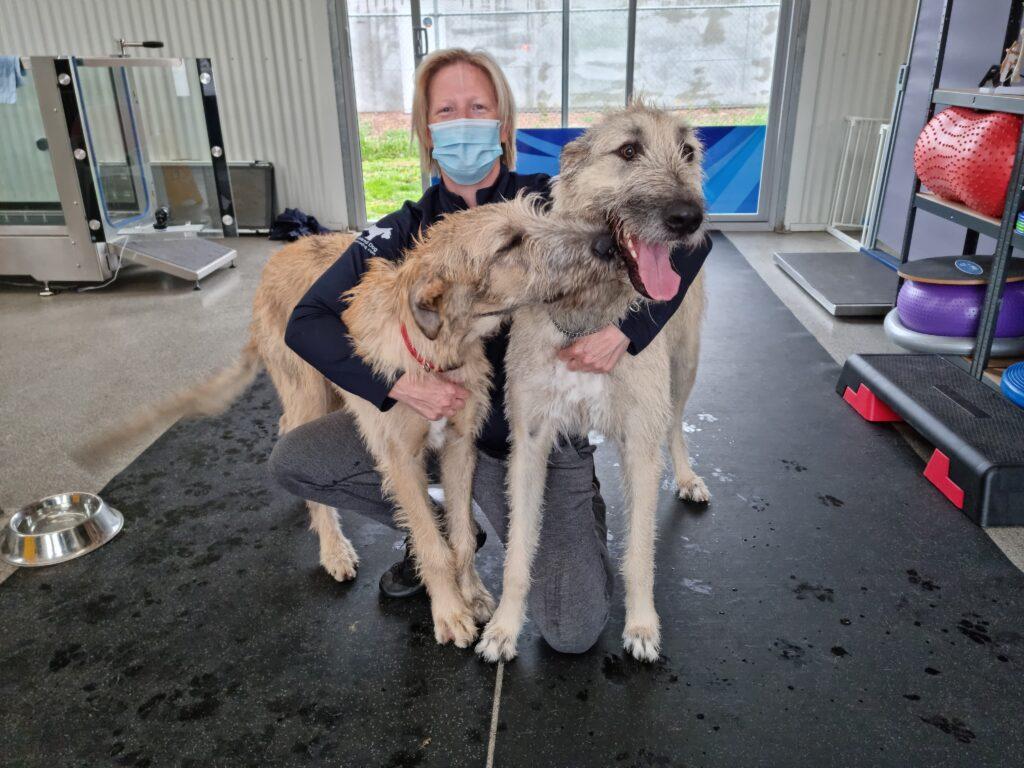Elbow dysplasia is a developmental condition that can significantly affect a dogs quality of life. While larger breeds like German Shepherds, Golden Retrievers, Rottweilers, and Bernese Mountain Dogs have a higher risk, dogs of all breeds can develop the painful condition.
Genetic predisposition is thought to be the main cause, however environmental influences, like excessive exercise and nutrition, through key puppy growth phases are also important factors in whether elbow dysplasia develops.
Types of Elbow Dysplasia in Dogs:
There are four main subcategories that fall under the umbrella term of elbow dysplasia:
- Ununited anconeal process
- Osteochondritis dissecans of the medial humeral condyle
- Medial coronoid process disease
- Elbow Incongruity
These subcategories represent the area of the elbow joint that is damaged. Medial coronoid process disease is the most common.
Once the elbow joint has been damaged by elbow dysplasia, a vicious cycle of inflammation and cartilage damage begins. This leads to degenerative changes in the elbow joint, which causes further pain and loss of function. Progressive elbow arthritis is the result.
Signs and symptoms of Elbow Dysplasia in Dogs:
Dogs often show the first signs of elbow dysplasia as puppies, with affected dogs developing a lameness in the front limb that worsens with time. Lameness is usually aggravated by exercise and doesn’t always resolve with rest. Both front limbs can be affected, which can make detection of altered gait difficult. When both elbows are involved there may be an unwillingness to exercise for long periods.
In symptomatic elbow dysplasia, dogs often avoid bending their elbow. They may sleep weirdly or find it difficult to get up from lying down, looking stiff when they get up. They may also avoid slippery floors. If this occurs in a puppy or young dog, elbow dysplasia is a diagnosis that needs to be ruled out.
Diagnosis of Elbow Dysplasia in Dogs?
Any young dog presenting to a vet with front limb lameness needs to be examined for possible elbow dysplasia.
Diagnosis is usually made with a combination of physical examination and x-rays. There will be varying degrees of front limb lameness, with pain on full bending or straightening of the elbow. Crepitation, swelling, joint capsule thickening and muscle atrophy are variable.
X-rays are diagnostic and may show early signs of arthritis with possible lose fragments.
Treatment of Elbow Dysplasia in Dogs:
Treatment for elbow dysplasia varies depending on the individual case. Important factors include the dogs age, amount of elbow degeneration (arthritis), and degree of lameness. Surgery is often indicated in younger lame dogs.
While surgery for elbow dysplasia may slow the progression of arthritis, the condition can’t be cured. Therefore, even if surgery is performed, lifelong conservative management is indicated.
Conservative management for elbow dysplasia includes:
- Body composition: Maintain a lean body composition through good weight management (4-5/9 on the BCS scale).
- Exercise: Keep an active lifestyle that avoids activities that promote lameness, stiffness and discomfort.
- Physical rehabilitation: Build muscle strength and stability, improve motor control, address abnormal movement patterns, and maximize joint range of motion.
- Manual Therapy: Maintain optimal muscle tone and mobility, so no one joint is taking additional load.
- Supplementation with omega-3 fatty acids, glucosamine/chondroitin supplements, and polysulfated glycosaminoglycans (e.g. cartrophen).
Conclusion:
Although some breeds are more susceptible to elbow dysplasia than others, many dogs are at risk of developing the condition. If you think your dog is displaying signs of elbow dysplasia, your vet will be able to discuss management options.
Sources:
American College of Veterinary Surgeons. Canine Elbow Dysplasia. https://www.acvs.org/small-animal/canine-elbow-dysplasia
How, K.L. (2018), 33rd annual meeting IEWG. http://www.vet-iewg.org/proceedings/
Lau, S.F. (2018), 33rd annual meeting IEWG. http://www.vet-iewg.org/proceedings/
Orthopedic Foundation for Animals. Examining Elbow Dysplasia. https://www.ofa.org/pdf/elbowarticle.pdf
Palmer, R.H. (2018), 33rd annual meeting IEWG. http://www.vet-iewg.org/proceedings/

